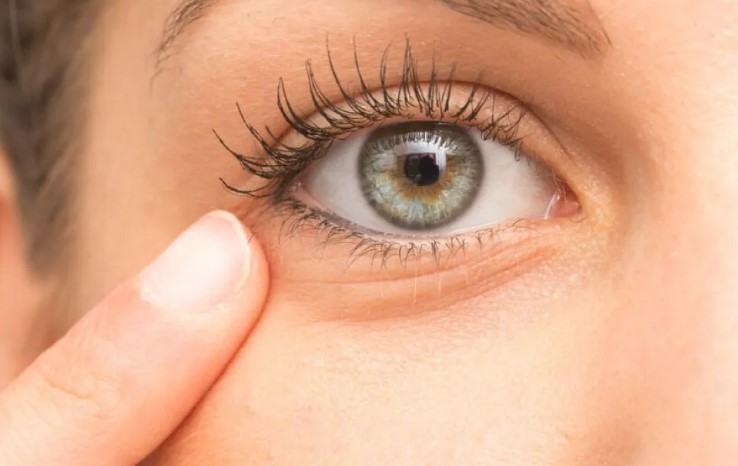
Blepharitis: Understanding and Managing This Common Eye Condition

Blepharitis is a common yet often misunderstood eye condition that can cause significant discomfort and inconvenience. Whether you’re dealing with persistent eyelid irritation or just curious about this condition, understanding blepharitis is crucial for effective management and relief.
Types of Blepharitis
Blepharitis is broadly classified into two types: anterior and posterior.
Anterior Blepharitis
Anterior blepharitis affects the outer part of the eyelid where the eyelashes attach. It’s often caused by bacteria or dandruff from the scalp and eyebrows.
Posterior Blepharitis
Posterior blepharitis impacts the inner edge of the eyelids that touch the eyeball. It’s usually linked to dysfunction in the meibomian glands, which are responsible for secreting oils that make up part of the tear film.
Causes of Blepharitis
Blepharitis can stem from various causes, and understanding these can help in its management.
Bacterial Infections
Bacteria, particularly Staphylococcus, are a common cause of blepharitis. These bacteria live on the skin and can multiply, leading to infection and inflammation of the eyelids.
Seborrheic Dermatitis
This skin condition, which causes dandruff and scaly patches, can also affect the eyelids, leading to blepharitis.
Rosacea
Individuals with rosacea, a skin condition that causes redness and visible blood vessels in the face, are more prone to developing blepharitis.
Allergies
Allergic reactions to eye makeup, contact lens solutions, or environmental factors can cause or exacerbate blepharitis.
Symptoms of Blepharitis
Recognizing the symptoms of blepharitis is the first step towards seeking treatment.
Common Symptoms
- Redness and swelling of the eyelids
- Itchy eyelids
- Crusty flakes at the base of the eyelashes
- Burning or stinging eyes
Severe Symptoms
- Blurred vision
- Loss of eyelashes
- Severe eye pain
- Ulceration of the cornea
Diagnosing Blepharitis
Proper diagnosis is essential for effective treatment.
Medical History and Physical Examination
A thorough examination by an eye specialist, along with a detailed medical history, is the primary step in diagnosing blepharitis.
Diagnostic Tests
In some cases, the doctor might take a sample of the eyelid debris or skin to test for bacteria or other organisms.
Treatment Options
While there’s no cure for blepharitis, various treatments can help manage its symptoms.
Home Remedies
Warm Compresses
Applying a warm compress to the eyelids can help loosen crusts and improve oil secretion from the meibomian glands.
Lid Hygiene
Regular cleaning of the eyelids with a mild soap or baby shampoo can help remove excess oil and debris.
Medications
Antibiotics
Topical or oral antibiotics can be prescribed to treat bacterial infections associated with blepharitis.
Steroid Eye Drops
These can help reduce inflammation and provide relief from severe symptoms.
Advanced Treatments
In persistent cases, treatments like intense pulsed light (IPL) therapy or lipiFlow thermal pulsation may be recommended to unclog the meibomian glands.
Lifestyle and Home Care Tips
Adopting certain lifestyle changes can greatly help in managing blepharitis.
Daily Cleaning Routine
Incorporating a daily eyelid cleaning routine can prevent the buildup of bacteria and oils.
Dietary Adjustments
A diet rich in omega-3 fatty acids can improve gland function and reduce inflammation.
Avoiding Triggers
Identifying and avoiding personal triggers, such as certain cosmetics or environmental factors, can prevent flare-ups.
Complications of Blepharitis
If left untreated, blepharitis can lead to several complications.
Chronic Discomfort
Persistent irritation and discomfort can affect daily activities and quality of life.
Eye Infections
Blepharitis can increase the risk of other eye infections like conjunctivitis.
Impact on Vision
Severe cases can lead to corneal damage and vision problems.
Prevention Strategies
Preventing blepharitis involves maintaining good eye hygiene and regular check-ups.
Good Hygiene Practices
Washing hands before touching the eyes and regularly cleaning the eyelids can help prevent infections.
Regular Eye Check-ups
Regular visits to an eye specialist can help in early detection and management of blepharitis.
Living with Blepharitis
Managing blepharitis requires ongoing effort and support.
Managing Flare-ups
Recognizing early signs and symptoms can help in taking prompt action to manage flare-ups.
Support Systems
Joining support groups or forums can provide emotional support and practical advice from others with similar experiences.
Common Myths about Blepharitis
Myth vs. Fact
Understanding the facts about blepharitis can help dispel common myths and misconceptions.
When to See a Doctor
Knowing when to seek medical help is crucial in managing blepharitis.
Warning Signs
Persistent symptoms despite home care, severe pain, or vision changes warrant a visit to the doctor.
Emergency Symptoms
Sudden severe pain, loss of vision, or signs of a severe infection require immediate medical attention.
Future Research and Developments
Ongoing research is continually improving our understanding and treatment of blepharitis.
New Treatments
Innovative treatments and therapies are being developed to provide better relief and management of blepharitis.
Ongoing Studies
Researchers are exploring the underlying causes and mechanisms of blepharitis to develop more effective treatments.
Conclusion
Blepharitis, while common, can be a manageable condition with the right approach. Understanding its causes, symptoms, and treatment options empowers patients to take control of their eye health. Remember, maintaining good hygiene, seeking regular medical advice, and staying informed about new treatments can make a significant difference.
FAQs
What is the main cause of blepharitis?
Blepharitis can be caused by bacterial infections, skin conditions like seborrheic dermatitis and rosacea, or allergies.
Can blepharitis go away on its own?
While symptoms can sometimes improve with good hygiene, blepharitis often requires ongoing management and treatment.
Is blepharitis contagious?
No, blepharitis itself is not contagious, although the bacterial infections associated with it can be spread.
How often should I clean my eyelids if I have blepharitis?
It’s generally recommended to clean your eyelids daily to manage symptoms and prevent flare-ups.
Can makeup worsen blepharitis?
Yes, certain types of makeup can irritate the eyelids and exacerbate blepharitis. It’s important to use hypoallergenic products and maintain good hygiene.
Bleeding After Menopause
You May Also Like

Health And Care: A Comprehensive Guide to Wellness
July 25, 2023
Cholera: An In-depth Look at a Persistent Global Threat
June 26, 2024
